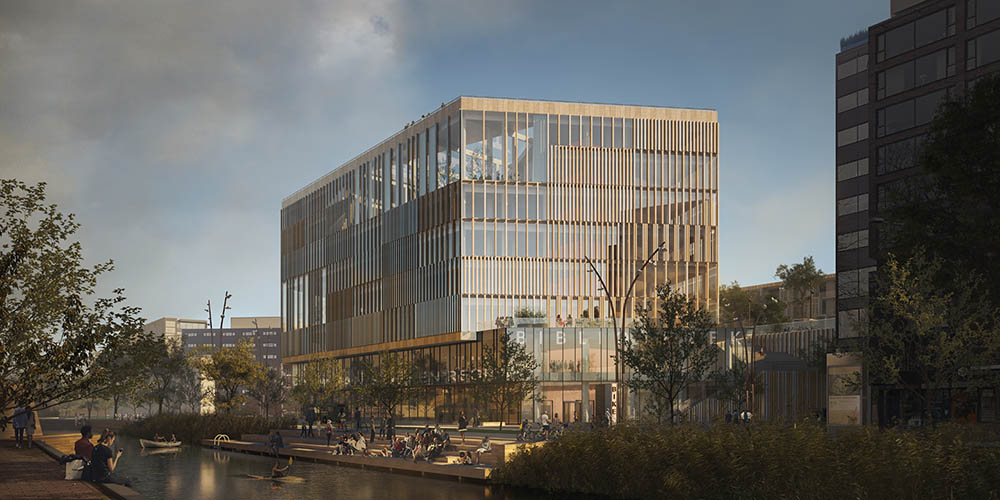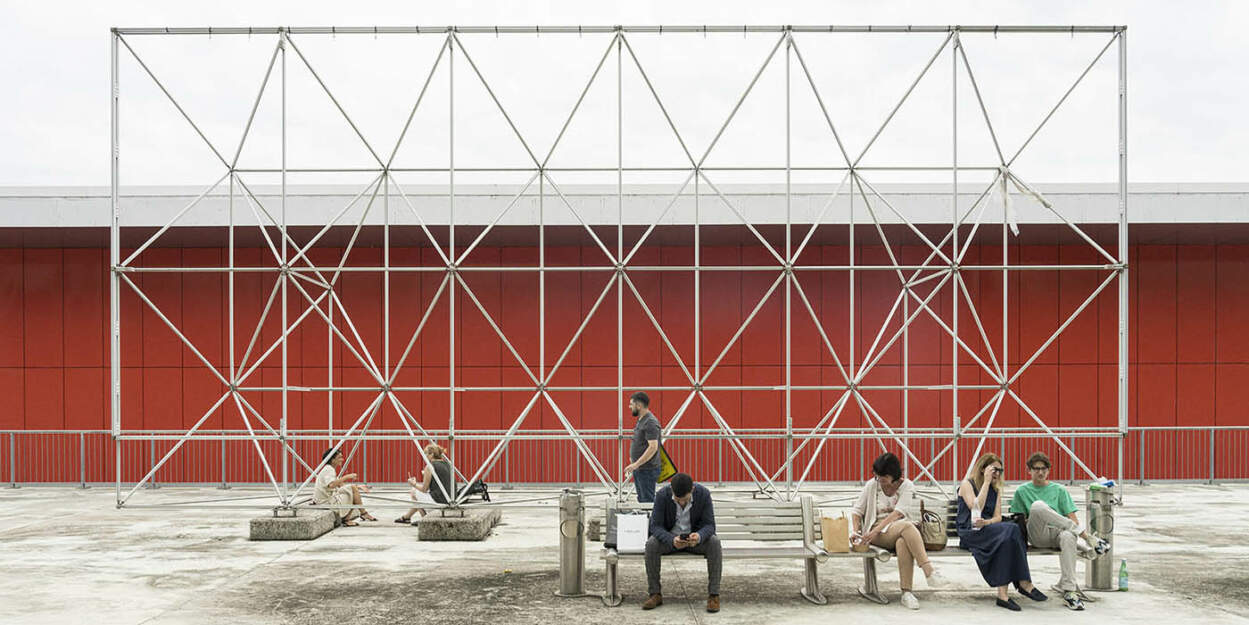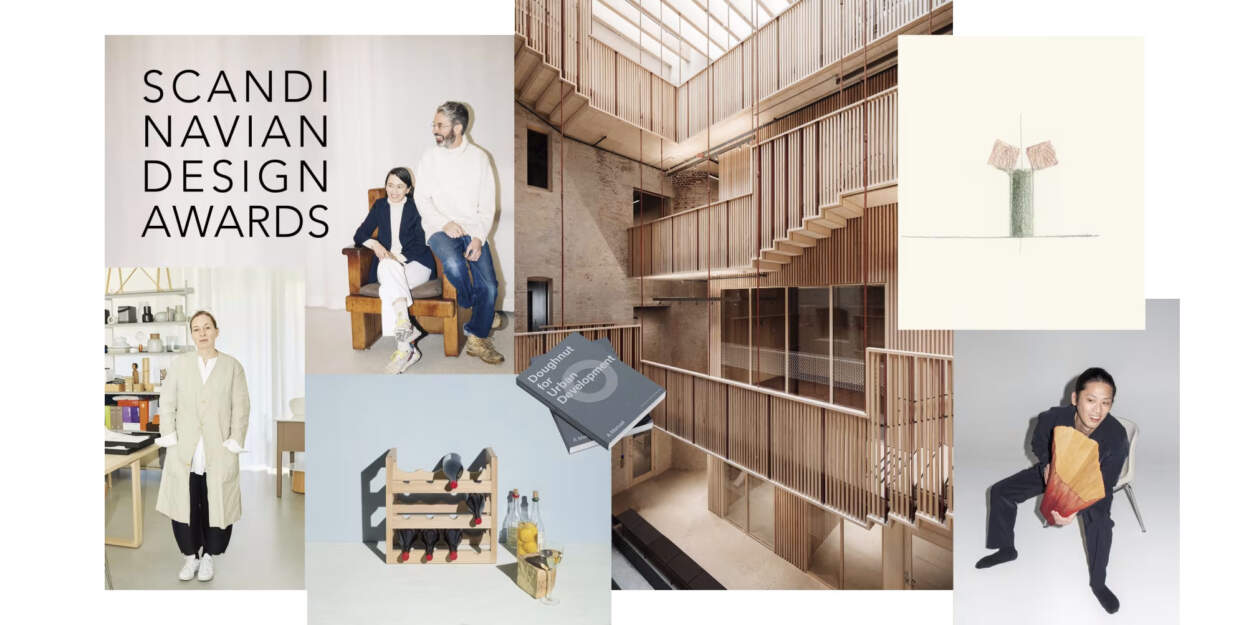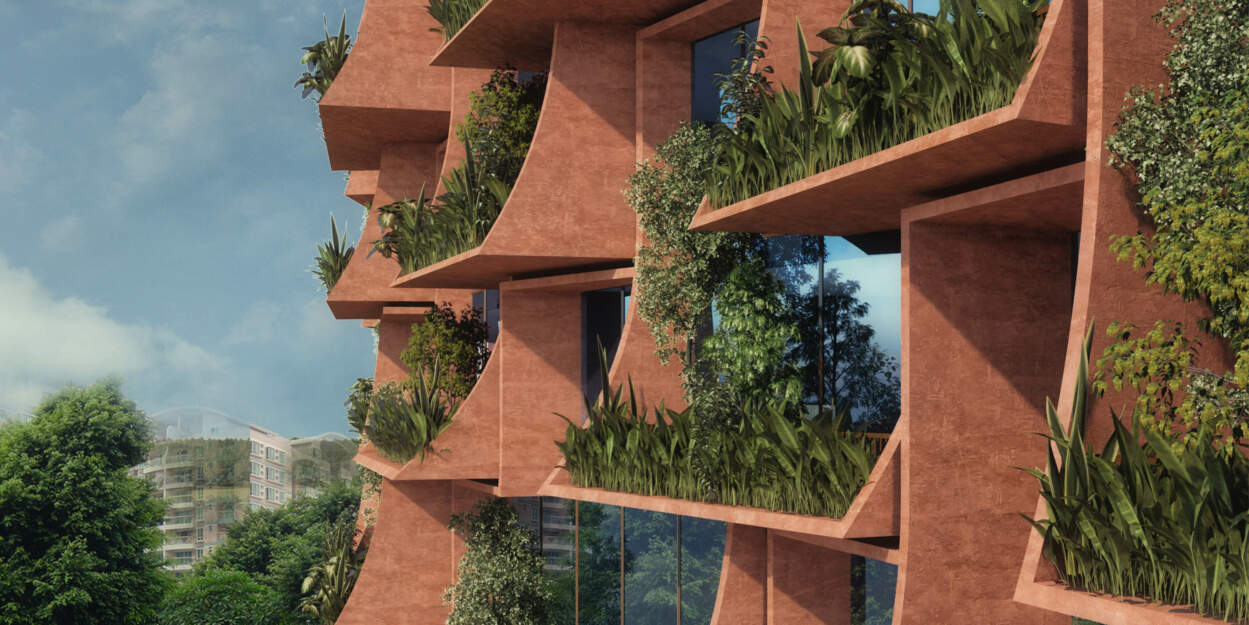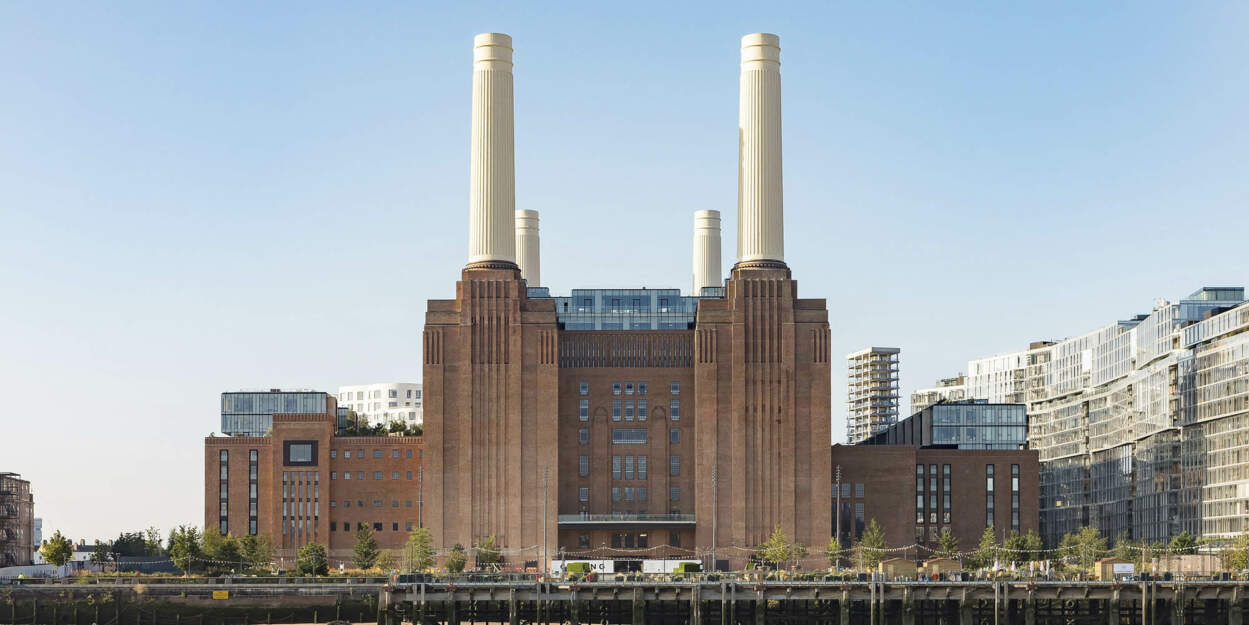A recycled concrete and wood architecture designed by Schmidt Hammer Lassen won the competition for the new House of the City and Region in Dordrecht, the Netherlands.
The new House of the City and Region is a 22,000-square-metre civic building that will become Dordrecht ́s most prominent public hub. The cultural anchor and urban node comprises a citizens' service centre, library, tourist information centre, and workplaces for the civil services of the municipality Dordrecht and the Drechtsteden.
The proposal for the new House of City and Region embodies the spirit and identity of Dordrecht as a city on the water.
With its unique location between the train station and historic city centre, the project will function as a facilitator of culture, a connector, and an environment for ideas and innovation, co-created with its stakeholders.
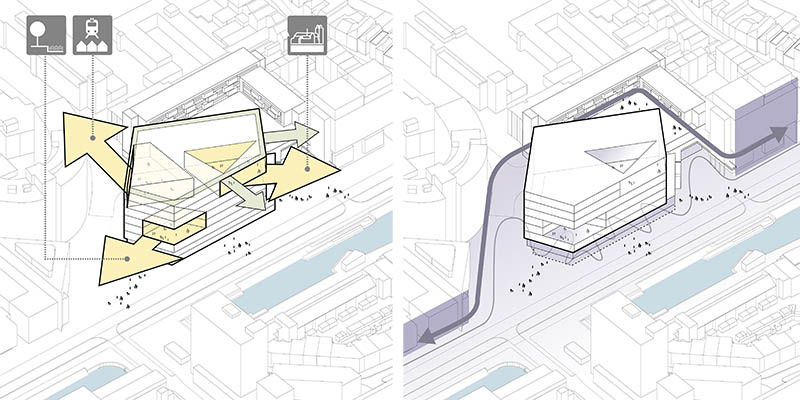
The project will recycle the existing concrete building foundation, the over-ground space and parking garage will use a recycled concrete structure and the floors above will be constructed in wood, including columns and beams in laminated wood, making the building lighter, more flexible and with a lower environmental impact.
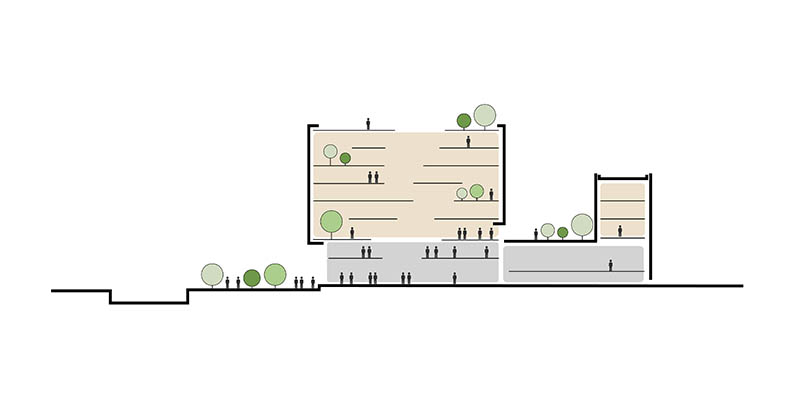
The new House of the City and Region proposes Lignatur surface elements that combines most functions of a floor, ceiling, and a roof, in one. The addition of Lignatur carries a lot of structural benefits as it is comparable to that of a concrete floor even with a larger span.
The robust yet warm materiality of the building provides a deliberate contrast to the adjacent office and residential buildings. The compact building promotes synergy between the various functions, while carved, double-height spaces enhance visual connectivity.
The facades act as windows to the city as the double-height spaces are oriented towards significant locations in the city such as the church, the square, and the train station.
The public library and workplaces for the municipality share common qualities such as environments for concentration, spaces to work together in teams, opportunities to relax, and room to hold formal and informal meetings.
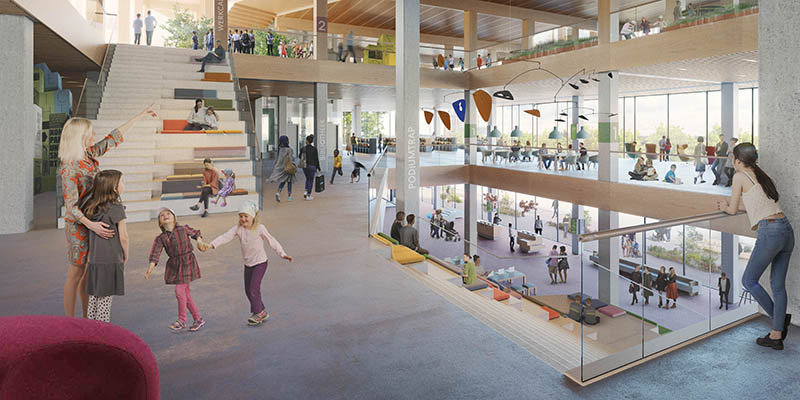
For more than two decades, Schmidt Hammer Lassen has integrated wood in the design of cultural, civic, commercial, and educational buildings over the world.
Their approach to timber architecture is rooted in a culture of sustainability and smart business – they believe that timber exists where these two notions intersect. Schmidt Hammer Lassen believes that timber contributes to a human sense of well-being and is an enviable solution in the quest for a resilient way forward.
We asked SHL Partner and building in wood expert Mads Kaltoft about the advantages of building with wood and their approach to timber buildings.


